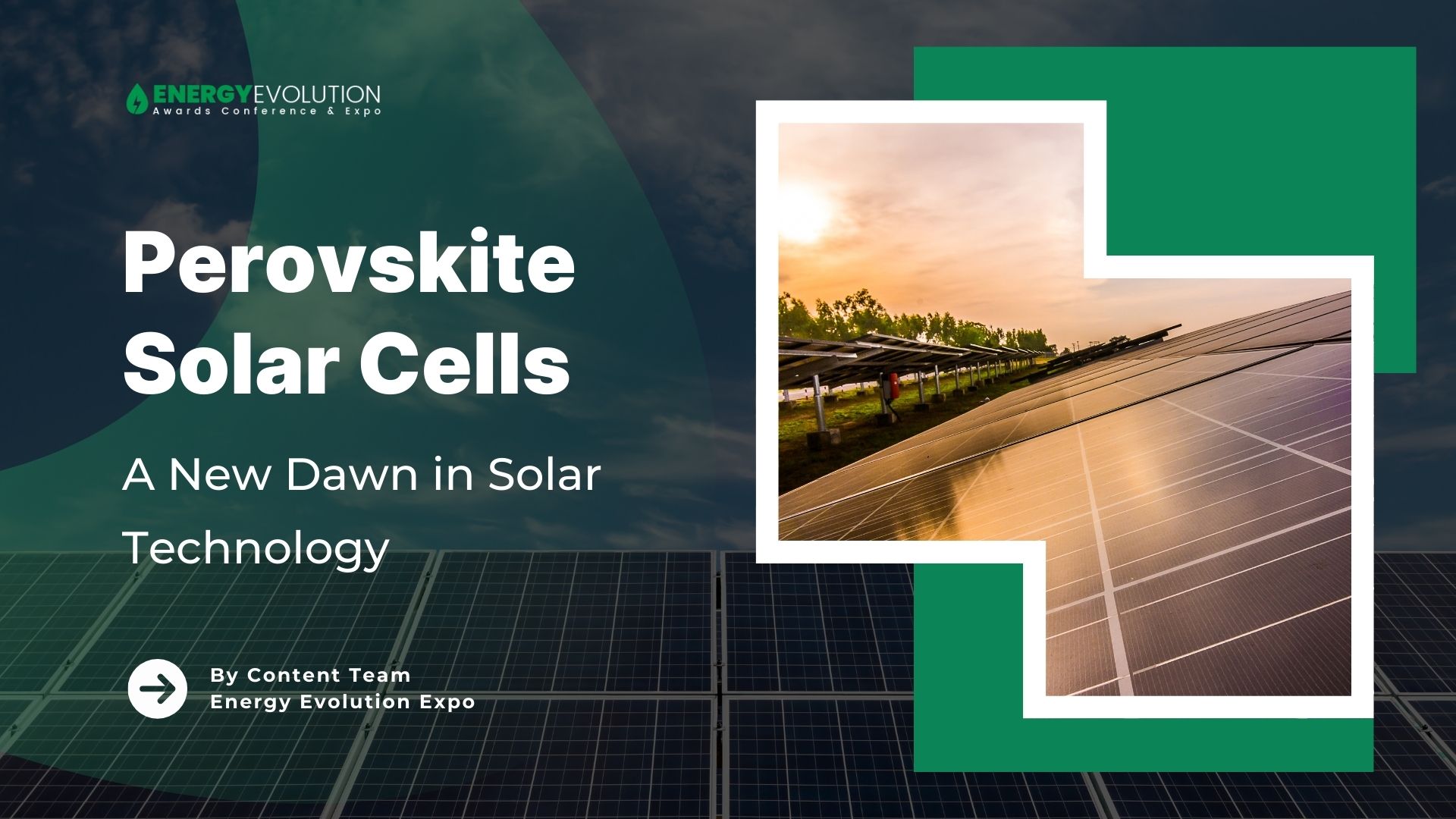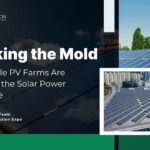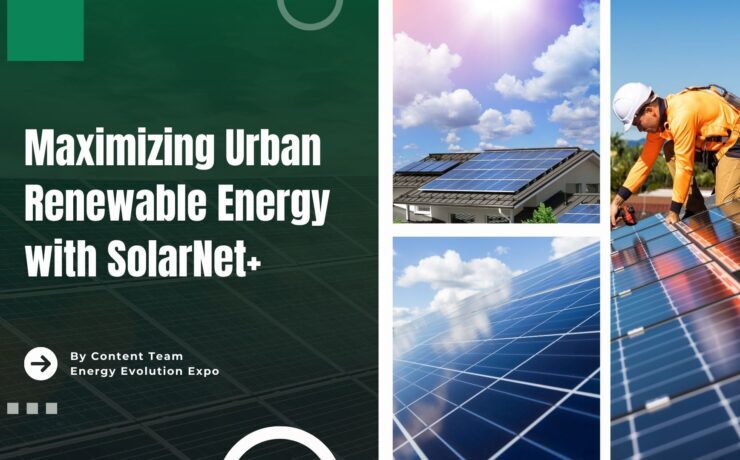Perovskite Solar Cells: A New Dawn in Solar Technology

As the world increasingly shifts towards renewable energy, solar power continues to be a key player in the energy landscape. Traditional solar technologies have paved the way for widespread adoption, but new innovations are pushing the boundaries of what is possible. Among these, perovskite solar cells have emerged as a revolutionary technology with the potential to transform the solar industry due to their high efficiency, low production costs, and versatility.
What are Solar Cells?
Solar cells, also known as photovoltaic (PV) cells, are devices that convert sunlight directly into electricity. These cells are the fundamental building blocks of solar panels, which are widely used in residential, commercial, and industrial applications. The main types of solar cells include:
1. Monocrystalline Silicon Solar Cells: These cells are made from a single crystal structure, offering the highest efficiency rates (up to 24%) and a long lifespan. However, they are also the most expensive to produce due to the complexities involved in creating a single crystal.
2. Polycrystalline Silicon Solar Cells: These are composed of multiple silicon crystals and are generally less efficient (around 15-20%) than monocrystalline cells. They are cheaper to manufacture, making them a popular choice for large-scale solar farms.
3. Thin-Film Solar Cells: This type of solar cell is made by depositing one or more layers of photovoltaic material onto a substrate. They are lightweight, flexible, and easier to produce in large quantities. However, their efficiency is lower, typically around 10-12%.
What are Perovskite Solar Cells?
Perovskite solar cells (PSCs) are an emerging class of thin-film solar cells that use a perovskite-structured compound as the light-absorbing layer. The most commonly used perovskite materials are hybrid organic-inorganic lead or tin halide-based compounds. The unique properties of perovskites, such as their ability to absorb light efficiently and their flexibility in composition, make them a promising alternative to traditional silicon-based solar cells.
Types of Perovskite Solar Cells
Perovskite solar cells can be categorized based on their composition and structural configuration:
1. 3D Lead Halide Perovskites: These are the most studied and developed type of perovskite solar cells. They offer high efficiency but suffer from stability issues due to their sensitivity to environmental factors like moisture and heat.
2. 2D Perovskites: These are layered structures where the perovskite material is interleaved with organic molecules. While they offer improved stability compared to 3D perovskites, their efficiency is generally lower.
3. Lead-Free Perovskites: Due to concerns about the environmental and health impacts of lead, researchers are actively exploring lead-free alternatives. While promising, these materials have yet to match the efficiency of lead-based perovskites.
How Perovskite Solar Cells Work
The operation of perovskite solar cells is based on the photovoltaic effect, similar to other types of solar cells. When sunlight hits the perovskite layer, it excites electrons, creating electron-hole pairs. These pairs are then separated by the built-in electric field within the cell, generating a flow of electric current. The ability of perovskites to absorb light across a broad spectrum, combined with their high charge-carrier mobility, allows for efficient conversion of sunlight into electricity.
Benefits of Perovskite Solar Cells
1. High Efficiency: Perovskite solar cells have achieved power conversion efficiencies exceeding 29% in laboratory settings, making them one of the most efficient solar technologies available today. This rapid improvement in efficiency has outpaced many other photovoltaic technologies.
2. Low Production Costs: The materials used in perovskite solar cells are abundant and inexpensive. Moreover, these cells can be manufactured using low-temperature processes, such as solution processing and printing techniques, which significantly reduce production costs compared to silicon-based cells.
3. Versatility: Perovskite materials can be fabricated into flexible, lightweight, and even semi-transparent solar cells. This versatility opens up new applications, such as building-integrated photovoltaics (BIPV), portable solar chargers, and other innovative uses where traditional rigid solar panels are impractical.
Challenges Facing Perovskite Solar Cells
1. Stability: One of the major challenges of perovskite solar cells is their susceptibility to degradation when exposed to environmental factors like moisture, oxygen, and UV light. This results in a shorter lifespan compared to silicon-based cells, which can last over 25 years with minimal degradation.
2. Toxicity: The most efficient perovskite solar cells use lead-based materials, which pose significant environmental and health risks. While lead-free alternatives are being researched, they have yet to achieve the same levels of efficiency and stability.
3. Scalability: While perovskite solar cells have demonstrated high efficiency in laboratory settings, scaling up production to a commercial level while maintaining performance is a complex challenge. Issues such as uniformity of the perovskite layer and the development of large-scale, stable manufacturing processes need to be addressed.
Recent Developments
Recent developments in perovskite solar cells (PSCs) have been focused on overcoming the key challenges of stability, scalability, and environmental impact, while pushing the efficiency boundaries even further. Here’s a detailed look at some of the most notable advancements:
1. Printable Perovskite Solar Cells
– Roll-to-Roll Printing Technology: One of the most exciting recent advancements is the development of printable perovskite solar cells. Using roll-to-roll printing techniques, researchers have managed to create flexible, lightweight solar panels that can be manufactured at a fraction of the cost of traditional silicon-based panels. This method allows for large-scale production, making it easier to integrate solar cells into various applications, such as wearable technology and building-integrated photovoltaics (BIPV)
2. Enhanced Stability through Encapsulation
– New Encapsulation Techniques: A major challenge with perovskite solar cells has been their susceptibility to degradation when exposed to environmental factors such as moisture, oxygen, and UV light. Recent research has focused on developing advanced encapsulation materials and techniques that significantly improve the stability and lifespan of these cells. For instance, incorporating hydrophobic materials and barrier layers has shown to protect the perovskite layer from moisture, thereby enhancing the longevity of the solar cells
– Incorporation of 2D Materials: Another approach to enhancing stability involves the use of 2D materials, such as graphene and transition metal dichalcogenides, which can serve as protective layers or charge transport layers. These materials not only protect the perovskite from environmental degradation but also improve the efficiency of charge transport, leading to higher overall performance
3. Development of Lead-Free Perovskites
– Bismuth and Tin-based Perovskites: To address environmental concerns associated with the use of lead in perovskite solar cells, researchers have been exploring alternative materials. Bismuth and tin-based perovskites are among the most promising candidates. Although these lead-free materials have yet to reach the efficiency levels of lead-based perovskites, ongoing
– Hybrid Organic-Inorganic Perovskites: Another promising direction is the development of hybrid organic-inorganic perovskites that combine the stability of organic materials with the high efficiency of inorganic perovskites. These hybrid materials are showing potential in creating more environmentally friendly and durable solar cells
4. Tandem Solar Cells
– Perovskite-Silicon Tandem Cells: Combining perovskite solar cells with traditional silicon cells has led to the development of tandem solar cells that achieve higher efficiencies than either technology alone. These tandem cells can reach efficiencies of over 30%, making them one of the most efficient solar technologies available. This approach leverages the high absorption efficiency of perovskites with the stability and established manufacturing processes of silicon cells
– All-Perovskite Tandem Cells: Researchers are also developing all-perovskite tandem cells, which stack two or more perovskite layers with different bandgaps. This configuration allows for more efficient use of the solar spectrum and has the potential to surpass the efficiency of single-junction perovskite solar cells
5. Quantum Dot Perovskite Solar Cells
– Perovskite Quantum Dots: Quantum dots, which are nanoscale semiconductor particles, are being integrated into perovskite solar cells to improve their light absorption and charge transport properties. Perovskite quantum dots have shown promise in enhancing the overall efficiency and stability of solar cells. These quantum dots can be tuned to absorb different wavelengths of light, making them highly versatile for various photovoltaic applications
6. Scalable Manufacturing Techniques
– Slot-Die Coating and Blade Coating: To move from laboratory-scale to industrial-scale production, scalable manufacturing techniques such as slot-die coating and blade coating have been developed. These methods allow for the continuous deposition of perovskite layers over large areas, which is essential for producing commercial-grade solar panels. These techniques are compatible with roll-to-roll manufacturing, which further reduces production costs and increases scalability.
7. Integration into Building Materials
– Building-Integrated Photovoltaics (BIPV): The flexibility and lightweight nature of perovskite solar cells make them ideal for integration into building materials, such as windows and facades. Recent developments have focused on creating semi-transparent perovskite solar cells that can be incorporated into windows, allowing buildings to generate electricity while maintaining natural light and aesthetics
Perovskite solar cells represent one of the most promising innovations in the field of renewable energy. With their high efficiency, low production costs, and versatile applications, they have the potential to revolutionize the solar industry. However, challenges related to stability, toxicity, and scalability need to be overcome before they can be widely adopted. Continued research and development are essential to unlocking the full potential of this technology, which could play a crucial role in meeting global energy demands in a sustainable and cost-effective manner.
We need to keep up with all recent innovations to reap maximum benefits and to facilitate a better understanding of the latest developments and trends in the Renewable energy Industry, various Conferences and Expos, which bring Industry leaders together, serve as an all-inclusive platform.
The Energy Evolution Awards, Conference, and Expo organized by Next Business Media is making its debut in Spain in 2025. It will be a leading forum dedicated to honoring excellence in Energy Technology, showcasing innovations, and fostering collaborations. The events unite industry leaders, and visionaries to explore the latest advancements, tackle key challenges, and shape the future of Energy. The Energy Evolution Awards, Conference, and Expo will celebrate outstanding achievements, promote sustainable practices, and drive the Energy Industry forward into a technologically advanced sustainable era. Energy Evolution Awards, Conference, and Expo will be a platform for cultivating innovation and shaping a brighter, more efficient energy landscape.






